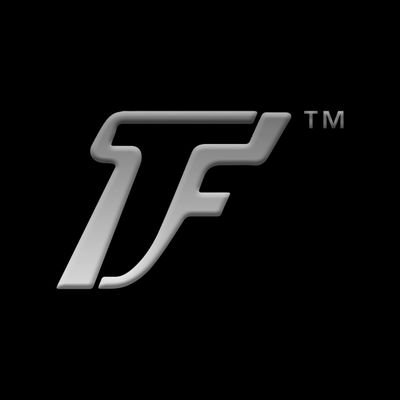#objectnet search results
Finally, what about more complex/“natural” domain shifts? We re-evaluate a ResNet-50 on #ObjectNet and find that our simple method does not improve results much in this case, motivating use of more involved unsupervised DA methods during robustness evaluation in future work 10/N


#MachineLearning aims at making computers identify images of 3D objects like humans do. #ObjectNet by @MIT aims at achieving this through a dataset of training and testing images of objects in different orientations and surroundings. Read more on :bit.ly/38s8Vml

But one of the hardest tasks in #OOD #generalization is defining rigorous test-sets. That's esp. true for natural images since nuisances are hard to define. #ObjectNet set the gold standard. The NICO dataset comes with rich context labels & could help: arxiv.org/abs/2204.08040

Eager to check out #objectnet. That is the messy world dataset for images and objects. #computervision #imagenet #ai #wordnet objectnet.dev

ObjectNet, a dataset compiled by MIT and IBM, demonstrates that there are - still - significant challenges and shortcomings related to "object detection / identification" by AI ... #ai #artificialintelligence #ObjectNet #objectrec…lnkd.in/djQ37bQ lnkd.in/dYCq78d
This @MIT_CSAIL object-recognition #dataset stumped the world’s best #ComputerVision models When leading object-detection models were tested on #ObjectNet, their accuracy rates fell from a high of 97% on #ImageNet to just 50-55% @GaryMarcus #DeepLearning news.mit.edu/2019/object-re…
news.mit.edu/2019/object-re… If you don't like #ImageNet or #ObjectNet, you can check one of our datasets here ;)👇 makeml.app/dataset-store #AI #ML #DeepLearning #ArtificialIntelligence #MachineLearning #ComputerVision #makeml #objectrecognition #dataset
But one of the hardest tasks in #OOD #generalization is defining rigorous test-sets. That's esp. true for natural images since nuisances are hard to define. #ObjectNet set the gold standard. The NICO dataset comes with rich context labels & could help: arxiv.org/abs/2204.08040

Eager to check out #objectnet. That is the messy world dataset for images and objects. #computervision #imagenet #ai #wordnet objectnet.dev

news.mit.edu/2019/object-re… If you don't like #ImageNet or #ObjectNet, you can check one of our datasets here ;)👇 makeml.app/dataset-store #AI #ML #DeepLearning #ArtificialIntelligence #MachineLearning #ComputerVision #makeml #objectrecognition #dataset
Finally, what about more complex/“natural” domain shifts? We re-evaluate a ResNet-50 on #ObjectNet and find that our simple method does not improve results much in this case, motivating use of more involved unsupervised DA methods during robustness evaluation in future work 10/N


This @MIT_CSAIL object-recognition #dataset stumped the world’s best #ComputerVision models When leading object-detection models were tested on #ObjectNet, their accuracy rates fell from a high of 97% on #ImageNet to just 50-55% @GaryMarcus #DeepLearning news.mit.edu/2019/object-re…
ObjectNet, a dataset compiled by MIT and IBM, demonstrates that there are - still - significant challenges and shortcomings related to "object detection / identification" by AI ... #ai #artificialintelligence #ObjectNet #objectrec…lnkd.in/djQ37bQ lnkd.in/dYCq78d
#MachineLearning aims at making computers identify images of 3D objects like humans do. #ObjectNet by @MIT aims at achieving this through a dataset of training and testing images of objects in different orientations and surroundings. Read more on :bit.ly/38s8Vml

#MachineLearning aims at making computers identify images of 3D objects like humans do. #ObjectNet by @MIT aims at achieving this through a dataset of training and testing images of objects in different orientations and surroundings. Read more on :bit.ly/38s8Vml

Finally, what about more complex/“natural” domain shifts? We re-evaluate a ResNet-50 on #ObjectNet and find that our simple method does not improve results much in this case, motivating use of more involved unsupervised DA methods during robustness evaluation in future work 10/N


But one of the hardest tasks in #OOD #generalization is defining rigorous test-sets. That's esp. true for natural images since nuisances are hard to define. #ObjectNet set the gold standard. The NICO dataset comes with rich context labels & could help: arxiv.org/abs/2204.08040

Eager to check out #objectnet. That is the messy world dataset for images and objects. #computervision #imagenet #ai #wordnet objectnet.dev

Something went wrong.
Something went wrong.
United States Trends
- 1. GTA 6 24.5K posts
- 2. GTA VI 7,658 posts
- 3. #LOUDERTHANEVER 1,462 posts
- 4. Rockstar 34.7K posts
- 5. Nancy Pelosi 103K posts
- 6. Paul DePodesta 1,120 posts
- 7. Rockies 3,073 posts
- 8. GTA 5 4,914 posts
- 9. Ozempic 13.2K posts
- 10. Grand Theft Auto VI 21.2K posts
- 11. RFK Jr 24.3K posts
- 12. Marshawn Kneeland 57.1K posts
- 13. Jonah Hill 1,351 posts
- 14. Michael Jackson 84.4K posts
- 15. Subway 46.6K posts
- 16. Oval Office 36.1K posts
- 17. GTA 7 N/A
- 18. Jaidyn 2,942 posts
- 19. Moneyball N/A
- 20. Sean Dunn 4,310 posts









